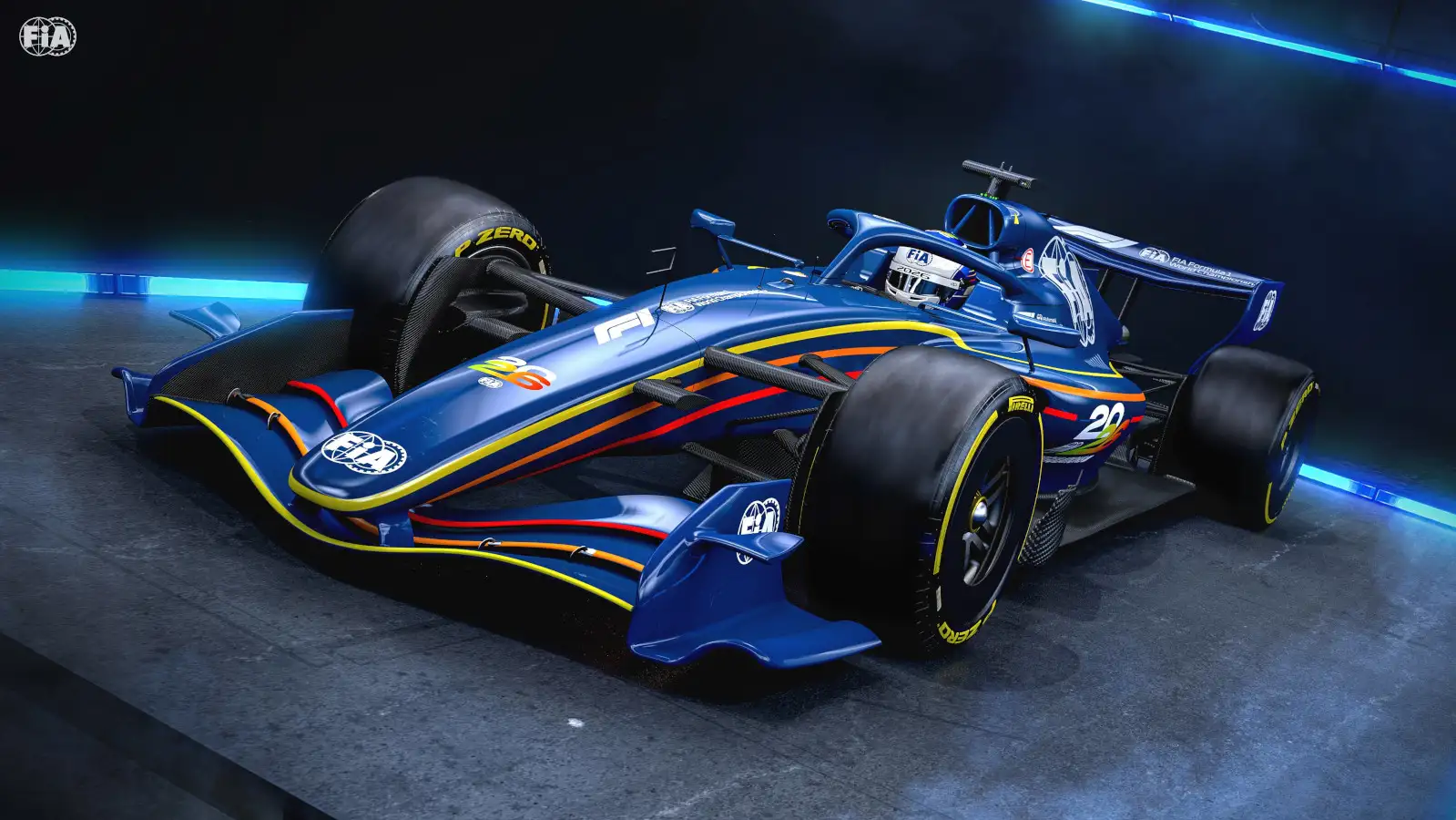The world of Formula 1 is on the cusp of a brand-new era in 2026, with engine regulations set for a radical overhaul. This is not just a minor adjustment but a major transformation, promising to completely reshape the landscape of this high-speed sport.
At the heart of this revolution is the disappearance of the MGU-H, a complex component of the current energy recovery system, coupled with a threefold increase in electrical power. This means the battery will become a pivotal, life-or-death element for each car’s performance. If the battery fails, the car’s race is effectively over.
Energy harvesting and deployment systems will also undergo massive changes, leading to profound effects on race strategy and overtaking capabilities. The result will be power units that are heavier, hotter, and more difficult to design than ever before.
Every manufacturer is forced to start from almost scratch, albeit with varying levels of experience and knowledge. Some will undoubtedly play it safe, while others will take huge risks. The pressing question is: Who is ahead in this race, and who will struggle to keep up?

Ferrari: A Bold Gamble
Ferrari, with its illustrious history and a “racing is life” ethos deeply embedded in its DNA, is making one of the boldest gambles in years with its 2026 power unit. Whispers from reliable sources suggest the Scuderia is pursuing a high-risk, high-reward strategy featuring an extreme engine design, 3D-printed components, and revolutionary cooling concepts.
The new power unit, codenamed 067, is described as “extreme.” This is reminiscent of 2022, when Ferrari had one of the most powerful but also most fragile engines on the grid. Once again, Ferrari is pushing performance to the absolute edge, worrying about reliability later. The logic behind this strategy lies in a new FIA rule: any manufacturer more than 3% down on power gets extra development opportunities in-season. Ferrari knows this provides them a “safety net” if things go wrong early on.
One of the biggest innovations in their 2026 power unit is in the cylinder head. Ferrari will utilize additive manufacturing, a more complex form of 3D printing, to build its exotic alloys, blending metals and ceramics. This technology will allow for complex cooling channels, higher combustion pressures, and hotter running temperatures—all designed to squeeze out more efficiency and power. Furthermore, this tech could also free Ferrari up to shrink their radiator size, giving the aero team more room to tighten up the car’s sidepods. There’s even a rumor circulating that they might try their own spin on Mercedes’s “zero-pod” concept. However, given how badly that went for Mercedes in the ground-effect era, a full-on copy seems highly unlikely. Still, smaller radiators could mean slimmer, more efficient bodywork and big gains in straight-line speed.
In short, Ferrari is aiming to shock the grid in 2026 with a radical design, futuristic manufacturing, and aggressive packaging. But the risk is huge. Push too far, and reliability gremlins will return to haunt them. It’s a gamble that could either make Ferrari the benchmark of the new hybrid era or leave them once again chasing what might have been.

Red Bull: The Biggest Challenge
At the other end of the spectrum, Red Bull faces the biggest challenge of all the engine manufacturers for 2026. For years, they have relied on partners—first Renault, then Honda. But now, for the first time, they will be going it alone. This is no small task. While not much is known externally or rumored about their power unit, it is not expected to be a leader in any of the important fields. However, don’t expect them to be right at the back of the grid either.
With the addition of Ford as an official partner in this project, Red Bull will gain a significant impetus in terms of knowledge and understanding of what to do with their power units. The expectation is they’ll be in the mid-pack, which speaks to the scale of the challenge Red Bull is facing. Of course, having Ford as a manufacturing partner gives them much more capability. But it remains a very difficult challenge because it’s not just about building an engine. It’s about creating the entire infrastructure around it: test benches, cutting-edge facilities, and recruiting the right people. All of that has to be done while the power unit itself is being developed.
The likes of Ferrari, Mercedes, and now Honda have decades of engine-building expertise behind them, while Red Bull is starting pretty much from scratch, even with all the resources at their disposal. Experts have stressed it’s going to take time before they can match the consistency and know-how of the established manufacturers. So, while Red Bull may be one of the teams to beat right now, their long-term future hinges on whether this bold 2026 project is successful or whether history will repeat itself in the guise of Honda, forcing them to endure the same painful lessons they had to a decade ago.
Mercedes: Continued Dominance?
A team that doesn’t face such hardships and has been dominating the sport for many decades now is Mercedes. Ever since the hybrid era began in 2014, they have led the charge in the field, and a similar situation is expected to unfold throughout the 2026 regulation cycle. Mercedes has invested a gigantic amount of time, money, resources, and development into their new Mercedes power unit for the 2026 regulations.
Within the paddock and from rumors circulated online, they are certainly believed to have the most powerful and efficient engine on the grid. And of course, with the 50/50 split between electric and internal combustion power, having a fantastic energy recovery system in their car is even more critical. From interviews with George Russell and statements from Toto Wolff, they seem to be hitting the majority of their targets already. While in other areas they are still pushing to reach those levels, make no mistake: if everyone internally within the Formula 1 world believes Mercedes will have the best power unit at the start of the cycle, expect that to have a great deal of truth behind it. Many believe they will be the leading team, and whoever has a Mercedes power unit is going to be right at the front—if they get the aero correct, of course.

Honda (with Aston Martin): The Dark Horse
A manufacturer considered a “dark horse” has to be Honda, which will be exclusively supplying Aston Martin for 2026 and beyond. Honda has come a long way since re-entering the sport back in 2015, from the disastrous early years with Fernando Alonso on the radio describing their engine as a “GP2 engine,” to leading and winning consecutive world championships with Red Bull Racing. The turnaround has been remarkable, and that is why many believe they are a dark horse.
While they may not initially begin this new era with the best power unit out of the bunch, their rate of improvement season upon season is the best in the field. If you look at where they came from to where they are now, that is without a shadow of a doubt. With the current set of regulations, they are rumored to have between 5 and 10 horsepower more than other engines on the grid. The reason they might not start as the best engine has a lot to do with what Aston Martin is building in their new factory in Silverstone. They brought in Adrian Newey, who will have specific packaging requirements that they probably weren’t even thinking about before he joined Aston Martin. This has likely set them back a couple of months, if not more, to reintegrate the engine, the packaging, and everything around the specifications that Adrian Newey wants. Because, of course, he loves to have the engine built specifically around the aero. Newey is an aero guru. So if he can get the aero spot on, it’s going to mean the engine has to be so much more tightly packaged than all the other teams. But many believe that if not in the first year, then by the second and third year, they’re going to be there or thereabouts on the engine and energy recovery side.
Audi: The New Challenger
Finally, we come to Audi, a team that is very much on the back foot, given all of the statements and information we’ve read online. This is their first foray into Formula 1. And while they have much success on the electric side in other motorsport categories, doing that at the pinnacle of motorsport in Formula 1 is another kettle of fish. However, they are under no illusions. They know they have their work cut out for them. Again, like with all the engine manufacturers, we do not have specific numbers to go off of. But from rumors, articles, and people in the know, they are definitely the slowest or weakest engine manufacturer on the grid.
The Pecking Order Prediction
This leaves us with a pecking order that is rumored to look very much like this: Mercedes, followed by Ferrari, Honda, Red Bull, and Audi. This is a fairly obvious order to dissect from all the information gathered.
However, a personal prediction might look slightly different:
Mercedes will still lead the race with the quickest, best engine and the best energy recovery system.
Honda could actually be the second force behind them, due to their incredible rate of improvement and accumulated experience.
Ferrari, with the technical gambles they are rumored to be making, will likely get a performance boost but will be vulnerable in terms of reliability, placing them in third.
Following them will be Red Bull Powertrains, and then, at some distance, the Audi power unit.
With just six to seven months before the new F1 cars hit the track in a private test in Barcelona, we don’t have much time left until we actually see the pecking order for this new era in Formula 1. The 2026 engine changes are not just a technical challenge but a strategic battle of wits, risk, and innovation, promising a season filled with drama and surprises.





